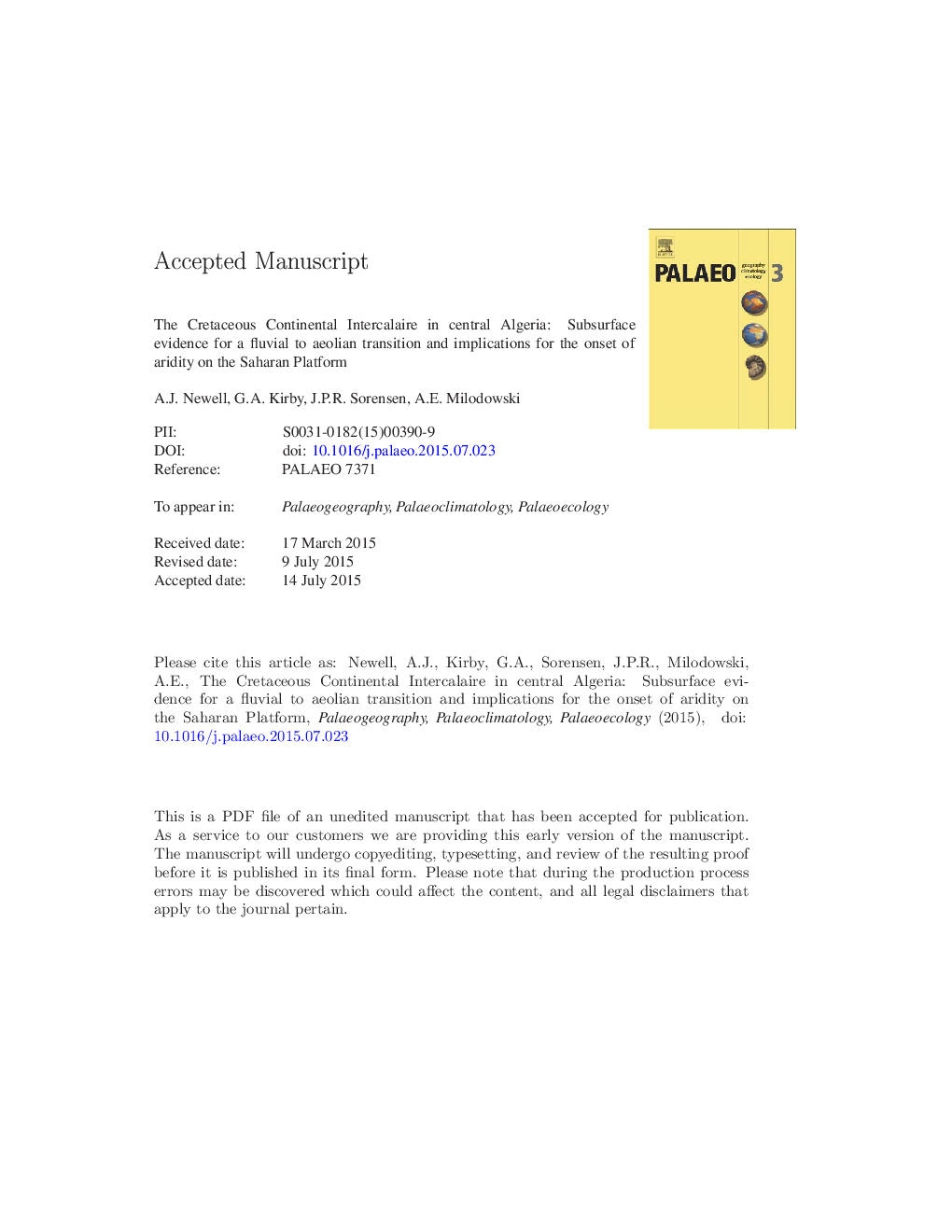| کد مقاله | کد نشریه | سال انتشار | مقاله انگلیسی | نسخه تمام متن |
|---|---|---|---|---|
| 6349615 | 1622152 | 2015 | 49 صفحه PDF | دانلود رایگان |
عنوان انگلیسی مقاله ISI
The Cretaceous Continental Intercalaire in central Algeria: Subsurface evidence for a fluvial to aeolian transition and implications for the onset of aridity on the Saharan Platform
دانلود مقاله + سفارش ترجمه
دانلود مقاله ISI انگلیسی
رایگان برای ایرانیان
موضوعات مرتبط
مهندسی و علوم پایه
علوم زمین و سیارات
فرآیندهای سطح زمین
پیش نمایش صفحه اول مقاله

چکیده انگلیسی
The Lower Cretaceous Continental Intercalaire of North Africa is a terrestrial to shallow marine continental wedge deposited along the southern shoreline of the Neotethys Ocean. Today it has a wide distribution across the northern Sahara where it has enormous socio-economic importance as a major freshwater aquifer. During the Early Cretaceous major north-south trending basement structures were reactivated in response to renewed Atlantic rifting and in Algeria, faults along the El Biod-Hassi Messaourd Ridge appear to have been particularly important in controlling thickness patterns of the Lower Cretaceous Continental Intercalaire. Subsurface data from the Krechba gas field in Central Algeria shows that the Lower Cretaceous stratigraphy is subdivided into two clear parts. The lower part (here termed the In Salah Formation) is a 200Â m thick succession of alluvial deposits with large meandering channels, clearly shown in 3D seismic, and waterlogged flood basins indicated by lignites and gleyed, pedogenic mudstones. The overlying Krechba Formation is a 500Â m thick succession of quartz-dominated sands and sandstones whose microstructure indicates an aeolian origin, confirming earlier observations from outcrop. These interbed with brick red, highly oxidised mudstones representing deposition in temporary lakes or lagoons under an arid climate. The switch from fluvial to aeolian sedimentation at Krechba on the Saharan Platform occurred in the late Aptian and Albian and is thus synchronous to a comparable change observed by previous authors in Lower Cretaceous non-marine deposits of NE Spain. This was probably driven by a combination of sea-level fall and the northward shift of global arid belts into western Neotethys caused by oceanic rifting between Africa and South America.
ناشر
Database: Elsevier - ScienceDirect (ساینس دایرکت)
Journal: Palaeogeography, Palaeoclimatology, Palaeoecology - Volume 438, 15 November 2015, Pages 146-159
Journal: Palaeogeography, Palaeoclimatology, Palaeoecology - Volume 438, 15 November 2015, Pages 146-159
نویسندگان
A.J. Newell, G.A. Kirby, J.P.R. Sorensen, A.E. Milodowski,